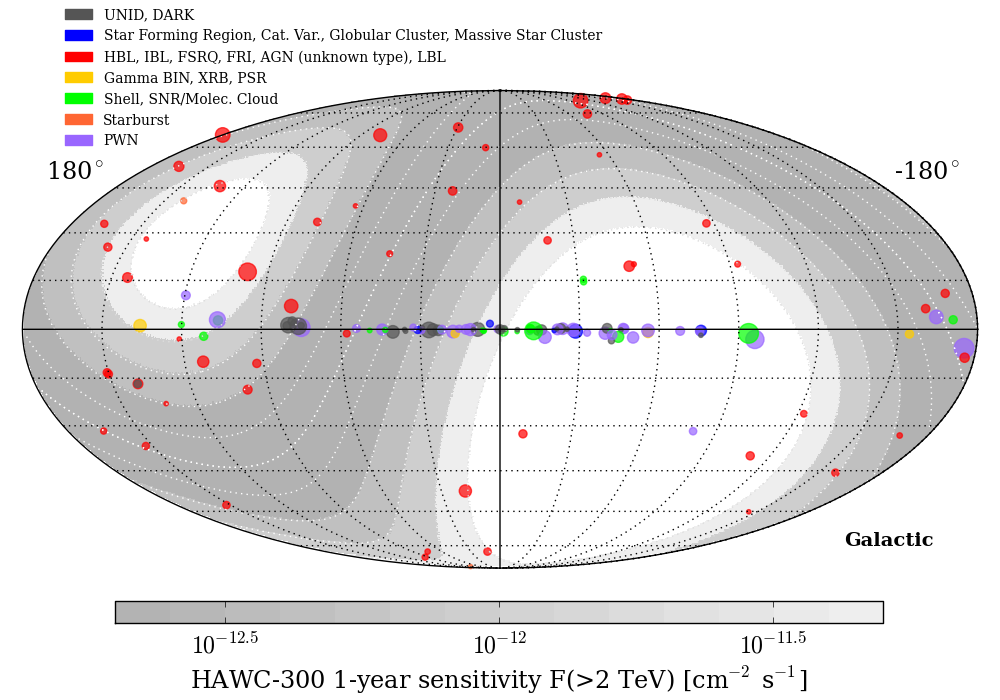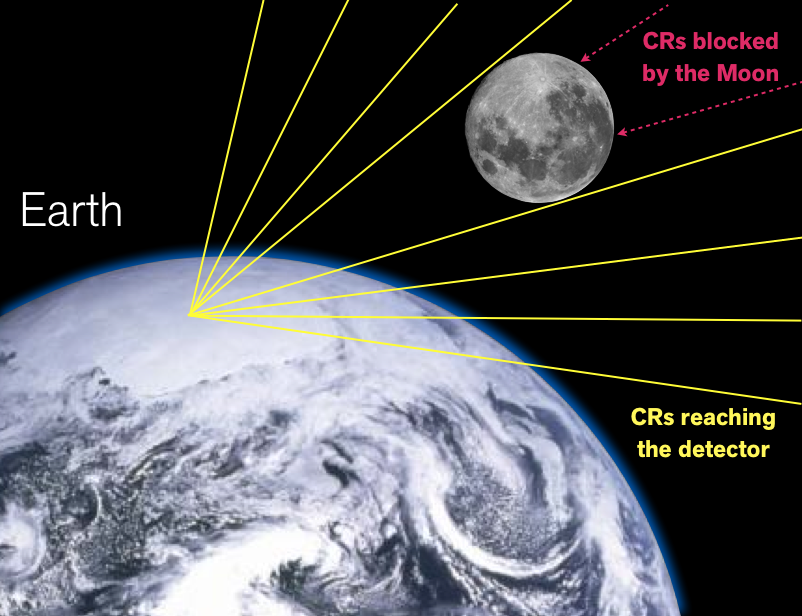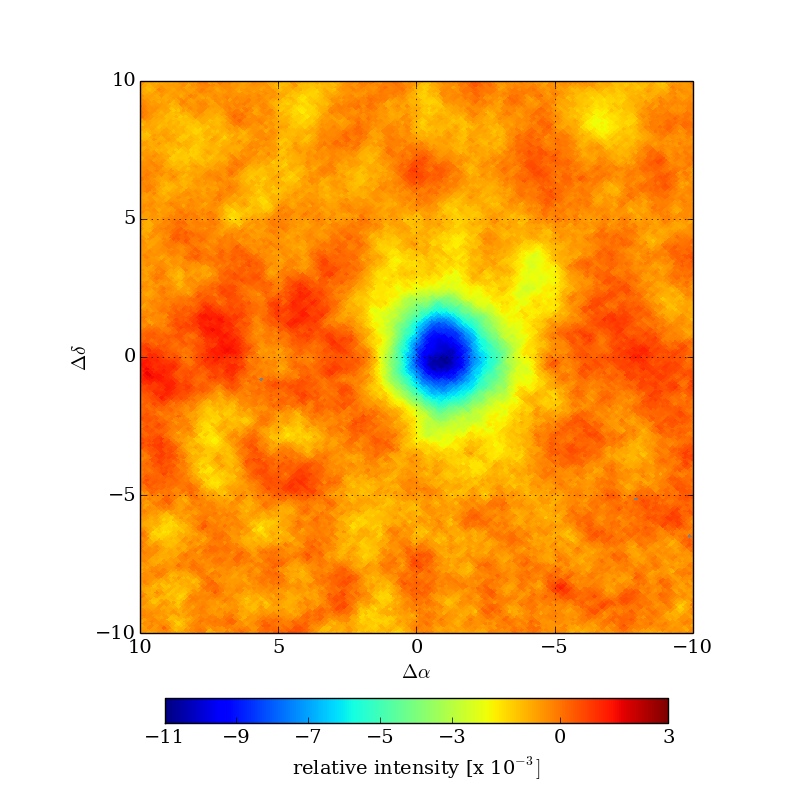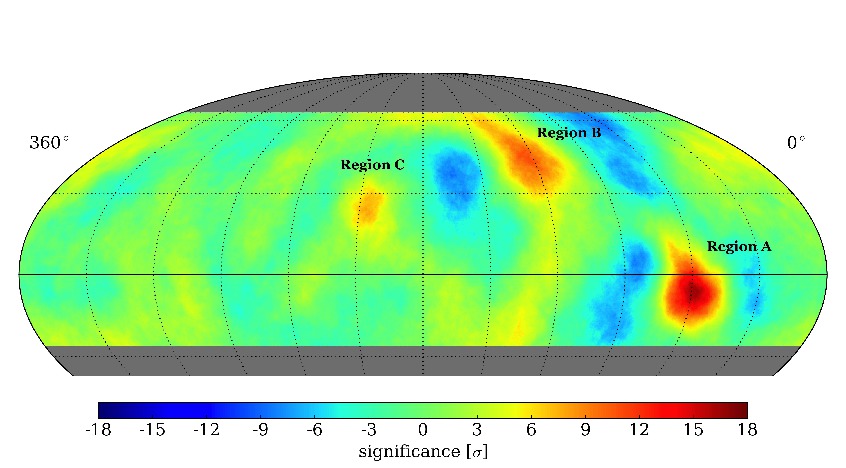HAWC Science
The TeV Sky

Origin of Galactic Cosmic Rays
By monitoring Galactic TeV sources and measuring their energy spectrum, HAWC will provide important clues on the origin of Galactic cosmic rays. It is generally believed that supernova explosions are responsible for the cosmic-ray flux up to about EeV. There is currently no direct evidence for this scenario, but we know that the power released in supernovae is sufficient to sustain the Galactic cosmic-ray flux. An important tool in understanding the origin of cosmic rays is the observation of high-energy gamma rays from localized sources. Gamma rays can be generated when accelerated cosmic rays interact in or near their source. However, the observation of gamma rays is not necessarily a "smoking gun'' for cosmic-ray acceleration, because high-energy gamma rays can also be produced by inverse-Compton scattering of low energy photons to high energies by ultrarelativistic electrons. Potential cosmic-ray accelerators can be identified by measuring the energy spectra of sources. A typical electron-produced gamma-ray spectrum would cut off earlier than a typical cosmic-ray-produced spectrum because of Klein-Nishina effects in the inverse-Compton cross section. HAWC will measure the spectra of Galactic sources up to 100 TeV to address the question of whether the source spectra exhibit a cutoff or continue to energies well beyond the reach of inverse-Compton upscattering.
Galactic Diffuse Emission
Galactic diffuse emission is produced when cosmic rays interact with interstellar gas and produce pions, which subsequently decay into gamma rays, and when high-energy electrons interact with gas and radiation fields. The measurement of the diffuse flux can therefore be used to find regions of cosmic-ray acceleration in the Galaxy. HAWC is in an excellent position to measure the diffuse gamma-ray spectrum at energies above 10 TeV, spatially resolve the diffuse emission, and extend the measurements to 100 TeV.
Active Galactic Nuclei
Active Galactic Nuclei were among the first extragalactic sources discovered at TeV energies. They show extreme variability, with flares of up to 50 times their quiescent flux. Their study can provide information on the acceleration mechanisms that produce TeV gamma rays. High-energy gamma rays from AGN are produced by the interaction of accelerated charged particles with ambient matter or radiation fields. Current models differ in whether electrons or hadrons are accelerated in the sources. In leptonic models, electrons produce high-energy gamma radiation via inverse-Compton scattering of ambient photons; for example, from synchrotron emission, from the accretion disk, or from the cosmic microwave radiation. Hadronic models assume that protons and nuclei are accelerated in the source and interact with interstellar material in an astrophysical beam dump.
Extragalactic Background Light
AGN can also be used to probe the extragalactic background light (EBL) and the intergalactic magnetic field (IGMF), which gamma rays must traverse from their sources to us. Measurements of the EBL and the IGMF are of considerable importance for cosmology.
Cosmic Rays
HAWC is a very sensitive detector for TeV cosmic rays. While the high rate of cosmic rays detected in HAWC forms an undesirable background in the search for gamma-ray sources, it also enables us to use HAWC for precision measurements of small deviations from isotropy in the cosmic-ray flux. Measurements of cosmic-ray anisotropy at the level of a fraction of a per mille in relative intensity are possible in the next few years.
More ...
Examples of other HAWC science topics include tests of Lorentz invariance with transient sources, searches for exotic signals such as massive relic particles (SUSY Q-Balls, WIMP dark matter, Kaluza-Klein dark matter), and primordial black holes.
First Results
The detector is still under construction, but data acquisition with the partially deployed detector started in early 2013. Between June and August 2013, the detector was operated with 95 tanks (HAWC-95), and after August 2013, with 111 tanks (HAWC-111). The HAWC-95 and HAWC-111 data sets have been used for understanding the detector and fine-tuning the analysis, but the high data quality already allows for physics analysis, especially for the study of cosmic rays, which form the vast majority of HAWC triggers. We have used the first data to study the angular resolution and pointing of the detector by analyzing the shadow of the Moon in cosmic rays, and we have analyzed the arrival direction distribution of cosmic rays in search for anisotropy.
Shadow of the Moon in Cosmic Rays
Cosmic rays collide with Earth nearly isotropically; they come equally from every direction. Our nearby Moon blocks cosmic rays and casts a detectable shadow on Earth. If cosmic rays travelled in perfectly straight trajectories and we had a perfect detector, we would expect to see no events coming from the part of the sky blocked by the Moon.


The picture on the right shows the relative intensity of the cosmic-ray flux observed by HAWC during 113 days of data taking with the partially deployed detector in 2013/14. The sky map is centered on the position of the Moon.
Cosmic-Ray Anisotropy
An early result from HAWC data is the detection of anisotropy in the arrival direction distribution of cosmic rays. Anisotropy in the flux of charged particles at TeV energies is not what one would readily expect. Galactic magnetic fields should scramble the arrival direction distribution of charged primaries in this energy range. Nevertheless, over the last decade, several experiments in the Northern and Southern Hemisphere have reported anisotropy in the arrival direction distribution of cosmic rays at TeV energies. The observed anisotropy has two main features: a large-scale structure with an amplitude of one per mille usually described as a dipole or a sum of low-order multipoles, and a small-scale structure with a few cosmic-ray excesses and deficits of angular size 10° to 20°. The discovery of this anisotropy clearly implies that the propagation of cosmic rays from their sources to us is not understood.


